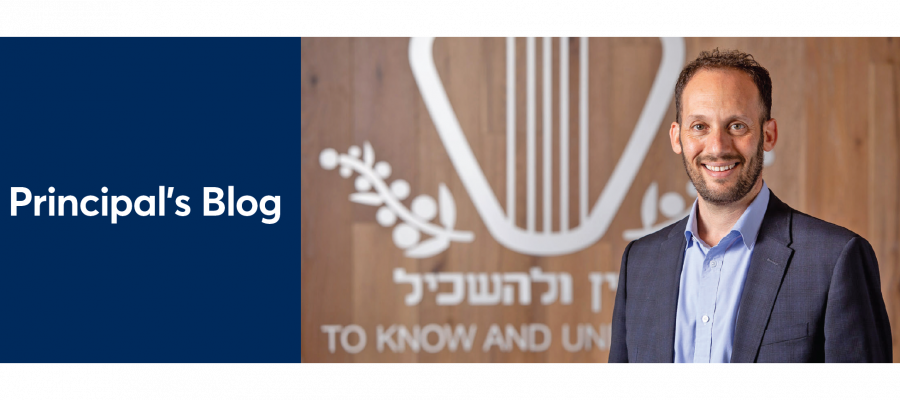
Pride in our names and our heritage
Do you know an Oliver, a Noah, or a Henry? Or an Isla, a Charlotte or an Amelia? These were the top three most popular boys and girls baby names selected in Victoria in 2024. The most popular global names are harder to definitively ascertain as some countries do not publish this data. Though it is thought that the most common male name in the world is likely Muhammad (including lots of different spelling variations) and female is likely Olivia. The most common surname is Wang (meaning King in Mandarin) with almost 100 million uses in Mainland China alone and many more around the world.
I have been thinking about names this week as I had the privilege of attending the Year 4 students’ initiation into Tanach study at their special event “Eleh HaShemot” (“These are the names”).
The title comes from the first line of Shmot (Exodus) which is: “And these are the names of the sons of Israel”. Following this is a listing of the twelve sons of Israel (formerly Jacob).
In a beautiful presentation shared with family and friends, our students were able to explore the origins of their names including the meanings, who they were named after and why.
I shared that my parents chose my name with reference to my mother’s classics studies, their love of arts and culture and their hope that I would develop pride in my Jewish identity – they selected Marc with reference to Marcus Aurelius and Marc Chagall.
It was fascinating to hear the inspirations behind the names for our Year 4s. Their sense of pride in this exploration was palpable.
Following this, our students were able to sit with their parents, grandparents and special friends to decorate a name plaque with attributes that they reflect or aspire to. This inspired warm and loving conversations where our families were able to build up the students with reference to their amazing characteristics.
Eleh HaShemot is reflective of our approach to Jewish life and learning. As a Progressive Jewish school, informed choice is central to our Jewish educational opportunities. We believe that our responsibility is to invest each student with a Jewish toolkit which they can use throughout their lives to participate in Jewish practice. Exposure to prayer, song, history, philosophy, culture and story are all vital components of this toolkit.
We provide this toolkit so that our students, together with other family members, can make informed decisions regarding how they choose to connect Jewishly and what practices that they will ultimately adopt or reject.
As this aspect of education refers to the individual development of identity, it is vital that the learning experiences are located within a loving familial and communal context. For this reason, it is essential that we do not just initiate the study of Tanach in the classroom. Rather, we turn this experience into a celebration that involves our students’ families so that our students understand that such experiences are valuable and valued.
Additionally, the ingenuity of prompting the Tanach study by linking it with an exploration of individual names is that it is reflective of an approach that allows students to personalise their learning and locate themselves within the stories and traditions that form the building blocks of their emerging Jewish identity.
I believe that the architecture of our curricular, experiential and programmatic Jewish learning provides our students with a framework to establish a rich and personalised relationship with their Judaism. Our hope is that this is something that they will continue to nurture and develop throughout their lives.
Shabbat Shalom,
Marc
